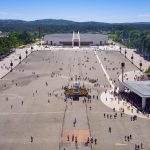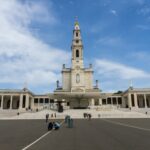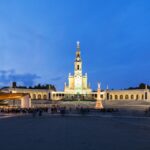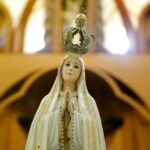The apparitions of the Virgin Mary to three shepherd children in Fatima, Portugal, in 1917, have captivated the curiosity and faith of millions around the world. This event, known as the Fatima Apparitions, holds particular significance not only for its spiritual implications but also for the so-called "Three Secrets of Fatima." These revelations, given to the children, have spurred debate, interpretation, and pilgrimage for over a century. This article delves into the historical context of these apparitions, unpacks the key facts surrounding the three secrets, and highlights the enduring significance of Fatima as a pilgrimage site.
The Historical Context of the Fatima Apparitions
The Fatima Apparitions began on May 13, 1917, in the small village of Fatima, Portugal. During this time, Europe was embroiled in the throes of World War I, a conflict that brought unprecedented devastation and turmoil. Amidst this backdrop of suffering and uncertainty, three shepherd children—Lucia dos Santos and her cousins, Francisco and Jacinta Marto—claimed to have witnessed the appearance of the Virgin Mary. Over the course of six months, the Virgin Mary appeared to the children on the 13th day of each month, delivering messages that would later be known as the Three Secrets of Fatima.
The socio-political landscape of Portugal during this period was marked by anti-clerical sentiments and political instability. The First Portuguese Republic had been established in 1910, leading to the separation of church and state, along with a wave of secularization that marginalized religious institutions. In this context, the Fatima Apparitions were not only a spiritual event but also a counterpoint to the secular ideologies of the time. The apparitions thus resonated deeply with the Catholic faithful, offering a sense of divine intervention and hope.
Furthermore, the global impact of the apparitions was amplified by the Miracle of the Sun, witnessed by tens of thousands on October 13, 1917. This phenomenon, described as the sun dancing in the sky, solidified the credibility of the children’s claims and attracted international attention. The event was reported by various newspapers, lending a semblance of empirical validation to the mystical occurrences. The historical context of Fatima, therefore, is a tapestry woven with wartime anxieties, religious fervor, and socio-political upheaval.
Key Facts Surrounding the Three Secrets
The Three Secrets of Fatima are a trio of prophecies and visions imparted to the shepherd children by the Virgin Mary, each carrying profound implications for the Church and the world. The first secret is a vision of Hell, wherein the children saw a terrifying landscape filled with the anguished souls of sinners. This vision underscored the importance of prayer, repentance, and devotion to the Immaculate Heart of Mary, themes that would recur throughout the apparitions.
The second secret pertains to the prediction of World War II and the call for the consecration of Russia to the Immaculate Heart of Mary. The Virgin Mary warned that if her requests were not heeded, Russia would spread its errors throughout the world, inciting wars and persecution of the Church. This secret has been a focal point of theological and geopolitical discussions, especially considering the context of the Cold War and the rise of Soviet communism. The consecration was eventually performed by Pope John Paul II in 1984, though debates continue over its timing and completeness.
The third secret, revealed by the Vatican in 2000, consists of a vision describing the persecution of Christians and an assassination attempt on a "bishop dressed in white," widely interpreted as a reference to the 1981 assassination attempt on Pope John Paul II. This secret has been the subject of extensive analysis and speculation, with some believing that parts of it remain undisclosed. The Vatican’s official interpretation links the vision to the 20th-century struggle against atheistic regimes and the suffering endured by the Church. The Three Secrets of Fatima continue to be a source of fascination, reflecting the intersection of the mystical and the historical.
The legacy of the Fatima Apparitions and the Three Secrets endures as a testament to the profound influence of Marian apparitions on the Catholic faith and global history. From the war-torn fields of 1917 Portugal to the corridors of the Vatican, the messages delivered to three humble shepherd children have reverberated through time, inspiring devotion, theological inquiry, and pilgrimage. The Shrine of Our Lady of Fatima in Portugal remains a beacon for millions of pilgrims seeking solace, healing, and a deeper connection to the divine. As the world continues to navigate the challenges of modernity, the timeless messages of Fatima offer a reminder of the enduring power of faith and the celestial mysteries that guide it.








